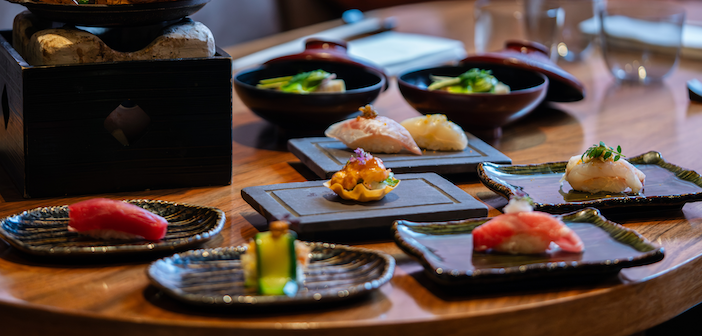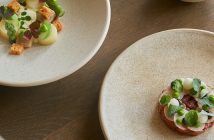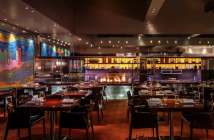Don’t you just love a bit of intrigue when you go dining? Trying to find an entrance to a restaurant that’s not overtly shouting its presence is one thing, but imagine needing a touch pad to enter when you find the door.
Once into the dimly-lit interior, they know me before I’ve said hello. ‘Good evening, Mr White, your guest is downstairs,’ and to conclude the clandestine rendezvous, I meet my dining companion in the gents, of all places. By chance, I might add. This is not something out of a Le Carre novel, there are no carnations in buttonholes or rolled up copies of the Financial Times.
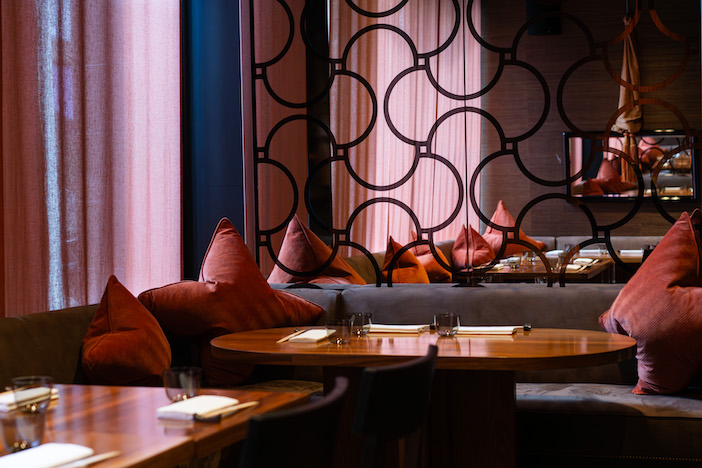
Even without the theatric touches, UMU’s reputation precedes it. Twenty years of Michelin-starred wonder since it first introduced Kyoto kaiseki to the UK, its star remains undiminished. Inside, Japanese minimalism and exactitude abound. A clutch of tables alongside a decorative mirrored wall installation sit opposite the kitchen where the team of chefs, focused entirely on their craft, work with precision delivering delicately-executed dishes over the bar. We could be in a downtown Tokyo ryokan executing a high-level business deal. I immediately feel empowered, if self-consciously underdressed.
Of all the styles of Japanese restaurants, from izakaya pubs to casual shokudo, not to mention the various one-dish eateries, kaiseki represents the pinnacle of Japanese haute cuisine; refined multi-course cooking focused on seasonality, simplicity and elegance. This is evident with the tasting menu we opt for; each course enigmatically named, a few key ingredients by way of description fuelling the intrigue.
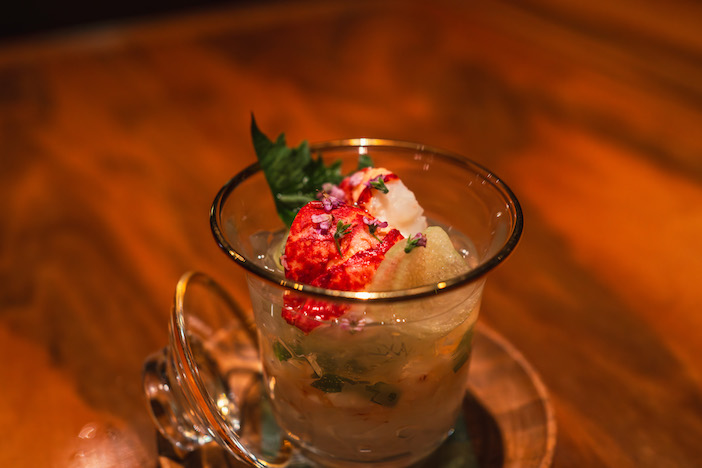
We open the batting with a glass cup of lobster with tokoroten noodles and taro, easing us into proceedings with such subtle flavours as to be imperceptible. It’s an indication that we really need to take our time here, savour every mouthful and, as we found later, follow the direction of our waiter for the specific approach to enjoy each dish.
The tsukuri course features three separate components, sashimi-style; lobster, sea bream and three cuts of tuna. And here they really come into their own, deploying a 17th century method of handling and preparing the fish, it involves piercing the fish in the neck and tail to avoid any trauma that might affect the texture. While the bream, seasoned simply with salt and Japanese sudachi lime really works, it’s the tuna that stands out. The belly, cut in concertina-style, fatty and succulent; the back, glistening like an oil slick, as fulsome as its depth of colour. Sashimi will never taste the same again.
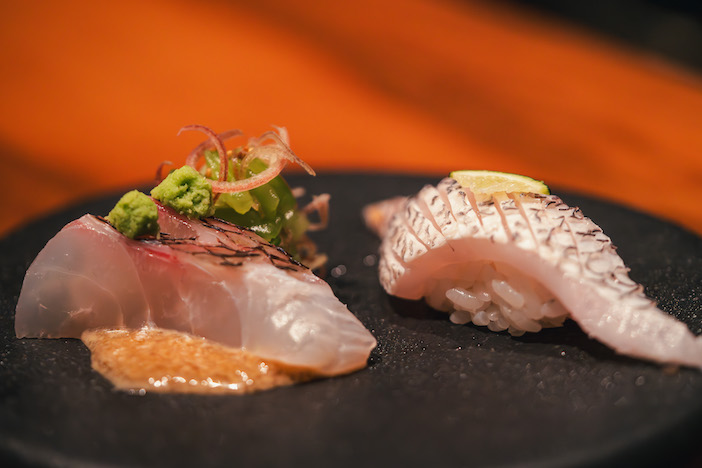
Each course, as beautifully designed as they are intricately prepared, is complimented by a sake pairing. It seemed only fitting, particularly since Umu boasts the most extensive collection in London, but while wine is an option, there was just something about the synergy of the sake and the dishes we were experiencing that heightened the experience. It came, too, with a degree of education, the sommelier describing how the degree of rice polishing opens up different flavour profiles and indicates the quality, enhanced by the water sourced, as well as the differences in region and terroirs, as you might expect, all contributing to their individual styles but, particularly, in complementing the dishes.
Gozinshu, for one, meaning ‘misty mountain’ is Nigori ‘cloudy’ style, typically drank in summer, working perfectly with the Gohan ‘rice dish’ that comes with steamed scallops. Again, marked by its simplicity, but crafted in design and with a specific method to enjoying it, as advised by the waiter; “try the rice to set the tone, then pour the tomato dashi stock, add the crackers and enjoy…”
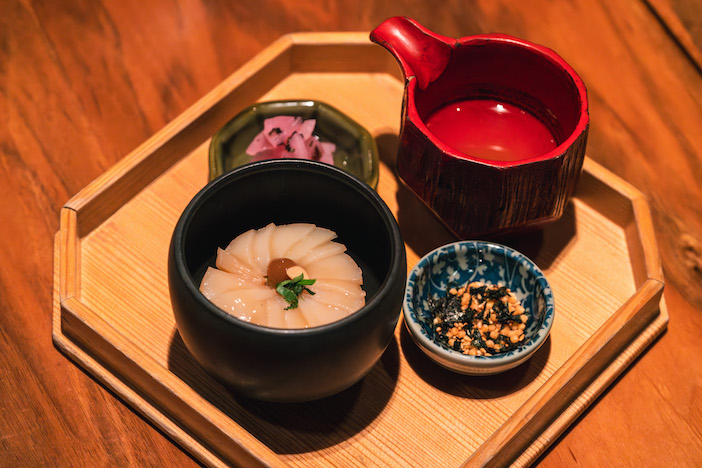
I couldn’t place his accent, but couldn’t fault his tableside manner. Engaging, sincere, and just the right level of enthusiasm. We felt we were in the hands of someone who really knows their onions. I was singing praises about the sashimi course. “You liked that?” he asked. I nodded like a 6-year-old who’s just been offered a double flake in his 99. “Well, it only gets better….”
Then comes the meat, a lamb dish served two ways with a warm sake, served in earthenware cups and warmed in a water bath, never directly. Presented two ways, grilled and marinated, with aubergine, gobo root and mustard leaves, each element placed like Tetris pieces on the plate, it resembled a Rothco artwork. And once more we are introduced to so many new flavours; how they achieve that marinade is something that continues to mystify me.
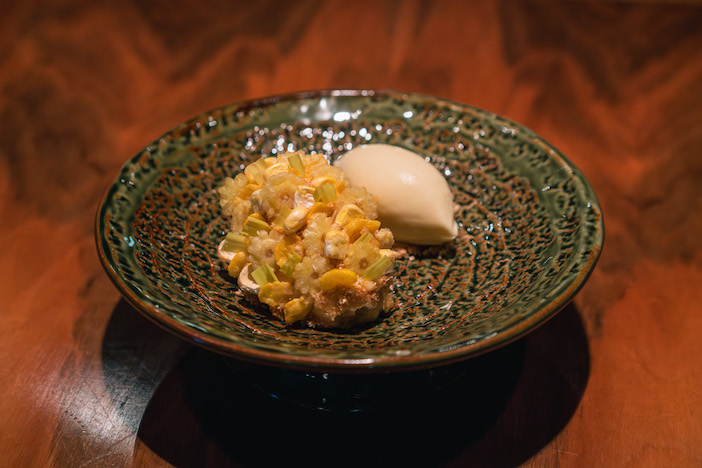
This eye-opening meal concludes with a sweetcorn ‘parade’ complemented by a Sayuri ’Umeshu’ plum sake; a dessert version, if you will. It’s tart, with hints of Sauternes, but better than dessert wine as it cuts through the layers of sweetened sponge cake, custard, caramelised corn like spines on a hedgehog and sweetcorn ice cream. The latter of which, again, being testament to what chef Ryo Kamatsu can conjure up. But to suggest Kamatsu is a conjuror would be a disservice; there is no illusory work at hand here. It is craftmanship par excellence.
And as for that layer of intrigue; that, too, understates the Umu experience. Once that panel is tapped and the door opens, like the white rabbit, one enters another world.
Umu, 14-16 Bruton Pl, London W1J 6LX. The new summer kaiseki menu is available now, priced at £250 per person. For more information, and for bookings, please visit www.umurestaurant.com. Umu is running two special anniversary dinners in September; An Evening of Sake and Celebration runs on 13 September only, £250pp; The Moët & Chandon dinner runs between 17-18 September, £250pp, book them here.

